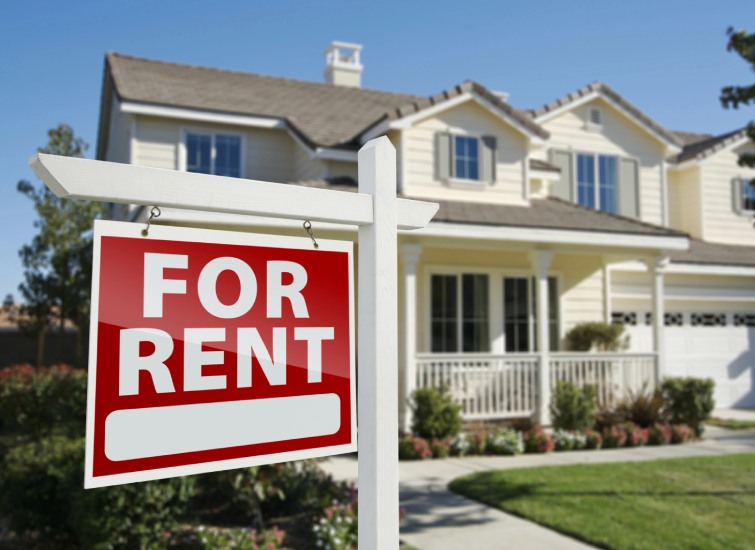Last Updated on March 18, 2024 by CREW Editorial
At times, investors may face unpredictable financial situations where opportunities emerge amidst uncertainty. Currently, there are complex and challenging market forces, but there are also lucrative investment opportunities available. However, it may be difficult for an investor to free up the necessary funds to take advantage of an opportunity, because of the challenging market conditions and restrictive bank or lending policies.
In such scenarios, considering different ways to raise capital becomes essential. Mortgage programs offer investors a solution by using the equity in their properties or assets. Through refinancing or equity release schemes, investors can access liquidity without giving up ownership. Specialized mortgage products like bridge loans or hard money loans provide flexible financing options with quick processes, enabling fast capital deployment to seize opportunities.
By carefully considering and leveraging mortgage programs, investors can adapt to changing markets, capitalize on profitable opportunities, and navigate challenging times effectively.
Rental Property Second Mortgages
Second mortgages are a financial option for investors looking to raise funds for their investments by leveraging the equity in their property. Essentially, it involves taking out an additional loan, secured by the property, on top of the primary mortgage. This can be beneficial when traditional lending avenues are limited, or when investors want to streamline the borrowing process.
However, it’s crucial to acknowledge the associated risks, such as increased debt and the potential for default if investment returns fall short. Despite these risks, second mortgages offer a valuable strategy for investors with a well-defined plan and understanding of the financial implications.
Second mortgages include a range of loan options, including second mortgages from traditional banks, home equity loans, and HELOCs. While the first two options offer a lump-sum payout, HELOCs function as a revolving line of credit, allowing borrowers to draw funds as needed, up to a predetermined limit. HELOCs typically feature variable interest rates tied to an index, such as the prime rate, and offer flexibility in repayment, often allowing interest-only payments during the draw period before transitioning to principal and interest payments.
Both home equity loans and second mortgages offer opportunities for investors to access capital, but their structures, disbursement methods, and repayment terms vary significantly.
Rental Property Home Equity Loans
Home equity loans, a subset of second mortgages, provide borrowers with a lump sum of money based on the equity accumulated in their property. These loans feature fixed interest rates and fixed monthly payments over a predetermined term, typically ranging from five to 30 years. Borrowers receive immediate access to the full loan amount, making home equity loans ideal for financing one-time expenses such as home renovations, debt consolidation, or major purchases.

When to Choose a Home Equity Loan:
Ringo So of 360Lending comments that “A home equity loan provides certainty and predictability in terms of repayment for investors who need a specific lump sum of money upfront to finance a specific project or purchase. Because the loan is backed by the equity of a home or other property, it’s possible to get better rates than with some other types of loans.”
Investors can secure capital for further investment opportunities without selling off assets or disrupting existing investment portfolios. Investors can also benefit from fixed interest rates to lock in predictable monthly payments over the loan term, particularly if they anticipate rising interest rates in the market. Investors can use these loans to finance specific projects or purchases.
Rental Property HELOCs
A HELOC, or Home Equity Line of Credit, is a type of loan that allows homeowners to borrow against the equity they have built up in their homes. Equity is the difference between the current market value of the home and the amount owed on the mortgage.
With a HELOC, the lender establishes a maximum loan amount based on a percentage of the home’s appraised value, minus the balance owed on the mortgage. The homeowner can then borrow against this line of credit as needed, similar to a credit card. The interest rate on a HELOC is typically variable and tied to a benchmark such as the prime rate.
HELOCs offer flexibility in terms of borrowing and repayment. Borrowers can access funds as needed, repay them, and borrow again within the specified draw period, which is usually several years. After the draw period ends, the repayment period begins, during which borrowers can no longer borrow against the line of credit and must repay the outstanding balance, typically over a fixed period of time.
When to Opt for a HELOC:
Investors with ongoing or variable funding needs, such as those planning multiple renovation projects or seeking to supplement irregular income streams, may find a HELOC advantageous due to its revolving line of credit structure. Although Home Equity Lines of Credit typically offer better rates compared to credit cards and personal loans, opting for fixed loan alternatives such as second mortgages could secure even more favourable rates and payments than HELOCs.
Investors will need to be comfortable with potential fluctuations in interest rates, or must anticipate short-term borrowing needs only, as HELOCS may feature lower initial interest rates but can vary.

Rental Property First Mortgage Refinancing
A rental property mortgage is tailored for investors aiming to acquire properties for rental purposes. Unlike mortgages for primary residences, these loans often come with distinct qualification criteria and typically necessitate larger down payments. Such mortgages recognize the unique risks and revenue streams associated with rental properties, ensuring that investors can secure financing tailored to their investment goals. These mortgages enable investors to build a portfolio of income-generating assets, diversifying their investment portfolio and potentially yielding substantial long-term returns.
When to Opt for a Rental Property Mortgage:
Investors choose rental property mortgages over other types of financing because they recognize the need for loan products designed to accommodate the cash flow dynamics and long-term investment strategies inherent in rental property ownership. These mortgages are a good option when an investor does not have enough equity in their primary residence to qualify for a second mortgage or a HELOC, or the investor needs different terms and conditions tailored to the rental property market.
Rental Property Renovation Loans
Renovation loans cater to investors seeking to purchase properties in need of renovation or rehabilitation. These loans offer financial support to cover the costs associated with property improvements, allowing investors to enhance the value of their assets. By financing renovations upfront, investors can unlock the potential of distressed properties, increase their market value, and potentially command higher rental income. Renovation loans empower investors to transform dilapidated properties into desirable assets, maximizing their investment potential and accelerating their wealth accumulation strategies.
When to Opt for a Renovation Loan:
This loan is aimed at a very specific purpose. Investors opt for renovation loans to fund the upfront costs of renovations, thereby increasing the property’s value and potentially generating higher rental income or resale value. Renovation loans offer investors the flexibility to finance property improvements without tapping into existing equity or personal savings, making them an attractive option for investors looking to maximize the potential of distressed or undervalued properties.

Rental Property Bridge Financing
Bridge loans offer a temporary financial solution for investors aiming to navigate the time gap between acquiring a rental property and selling another asset. This financing option is crucial for those eager to seize valuable investment deals without being hindered by the timing of their real estate transactions. It allows investors to purchase a new property before finalizing the sale of an existing one or to quickly secure a promising rental investment. Bridge loans furnish investors with the essential liquidity and adaptability to implement their investment plans effectively. Utilizing bridge financing enables investors to perfectly time their market entries, take advantage of investment opportunities, and enhance their returns on investment.
When to Opt for a Bridge Loan:
Again, this is a very specific type of loan. These solutions are used only for very short terms to ‘bridge’ a gap from one loan to another. Bridge financing offers investors the liquidity and flexibility needed to execute their investment strategies efficiently, without being constrained by the timing of property transactions or the availability of existing equity.
In navigating mortgage options to fund investments, financial objectives, funding requirements, and risk tolerance needs to be assessed carefully.
Ringo So notes that “Within each loan type, there is a wide variety of lenders and products to cater to an equally wide range of individual needs. Finding the right option for each investor can make a huge difference in the potential future profitability of an investment opportunity.”
Ultimately, the choice between these options depends on an investor’s preferences, the nature of their investment projects, and their long-term financial strategy. 360Lending offers home equity loans and second mortgages, tailored to individual needs, to help people take advantage of investment opportunities when they arise.








